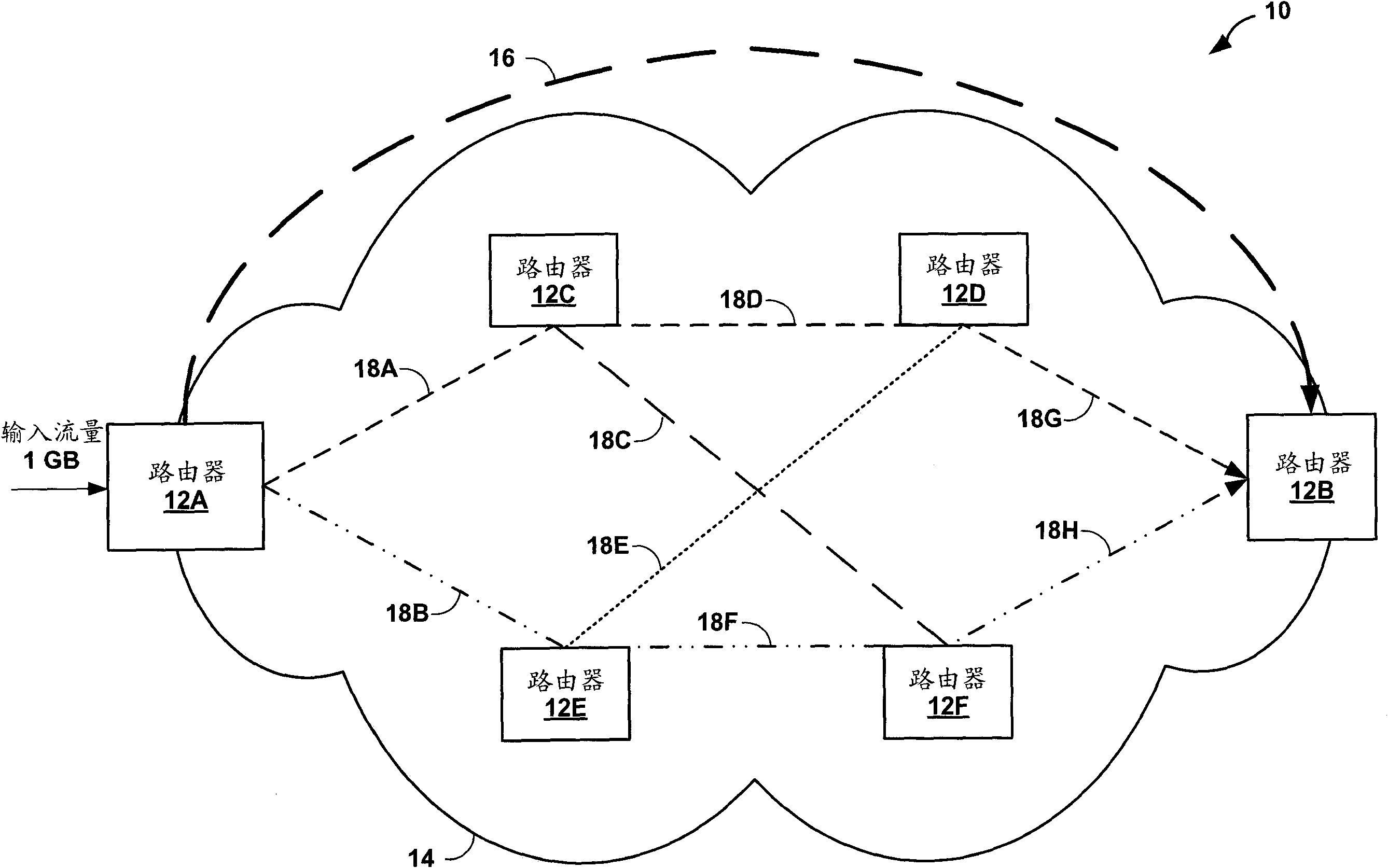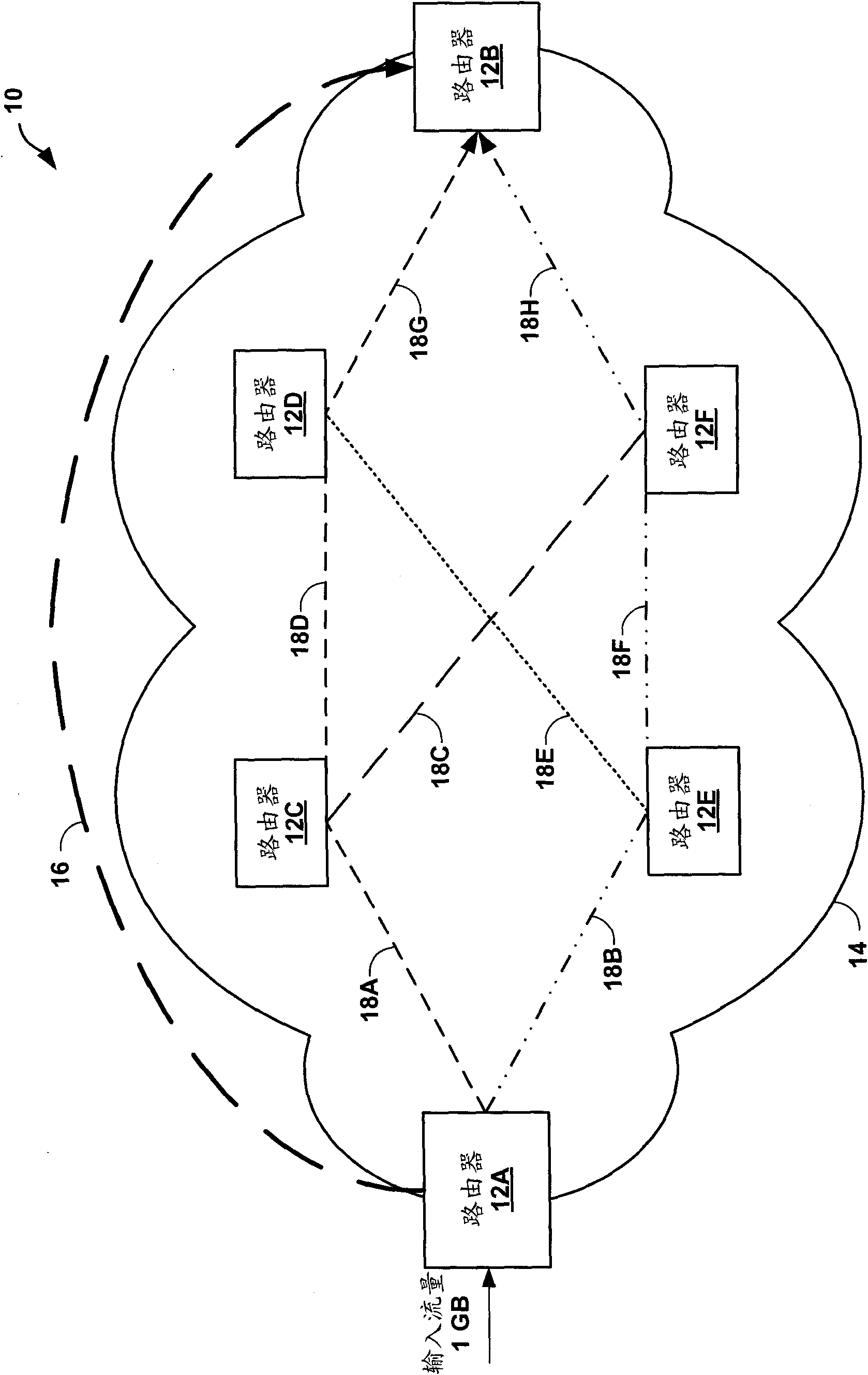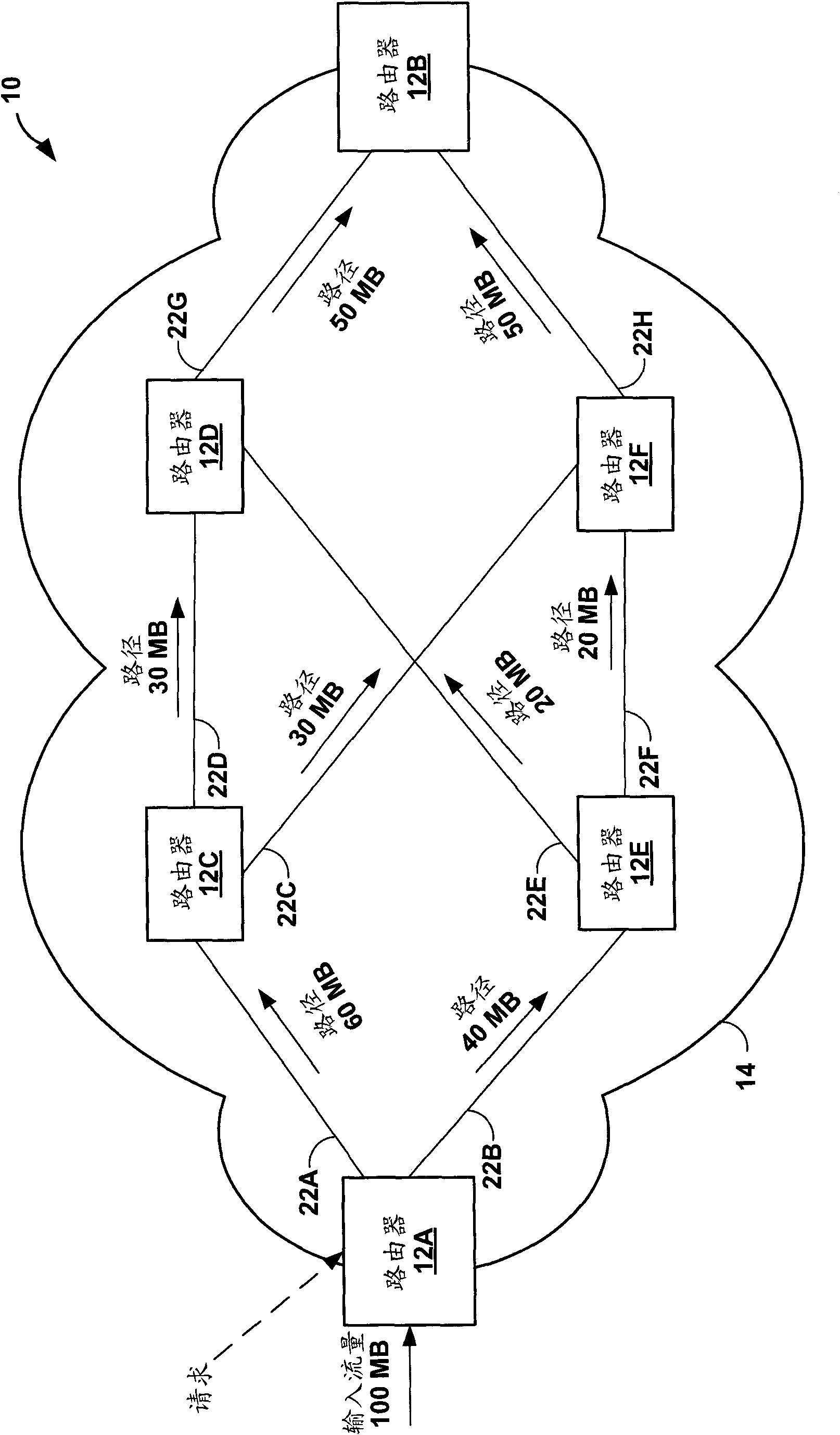Load balancing network traffic on a label switched path using resource reservation protocol RSVP with traffic engineering TE
A load balancing and network traffic technology, applied in the field of computer networks, can solve problems such as loss and congestion, achieve the effect of effective available bandwidth and improve network resilience
- Summary
- Abstract
- Description
- Claims
- Application Information
AI Technical Summary
Problems solved by technology
Method used
Image
Examples
Embodiment Construction
[0027] 1 is a block diagram illustrating a system 10 that includes an exemplary computer network 14 with a load-balancing traffic engineering tunnel 16 established over the network 14 between an ingress router 12A and an egress router 12 . For example, tunnel 16 may include a Resource Reservation Protocol based on Traffic Engineering Extensions (RSVP-TE) Label Switched Path (LSP). In the example of FIG. 1, routers 12A-12F ("routers 12") use the modified RSVP-TE protocol that has been extended to establish load-balancing TE tunnel 16 extending from ingress router 12A to egress router 12B. When router 12 receives network traffic, tunnel 16 is configured on router 12 to allow router 12 to load balance traffic over subpaths 18A- 18H of tunnel 16 ("subpaths 18"). In this manner, tunnel 16 may be viewed as a point-to-point tunnel between a single ingress and a single egress, structured to include multiple intermediate sub-paths for effectively load balancing MPLS traffic associated ...
PUM
 Login to View More
Login to View More Abstract
Description
Claims
Application Information
 Login to View More
Login to View More - R&D
- Intellectual Property
- Life Sciences
- Materials
- Tech Scout
- Unparalleled Data Quality
- Higher Quality Content
- 60% Fewer Hallucinations
Browse by: Latest US Patents, China's latest patents, Technical Efficacy Thesaurus, Application Domain, Technology Topic, Popular Technical Reports.
© 2025 PatSnap. All rights reserved.Legal|Privacy policy|Modern Slavery Act Transparency Statement|Sitemap|About US| Contact US: help@patsnap.com



